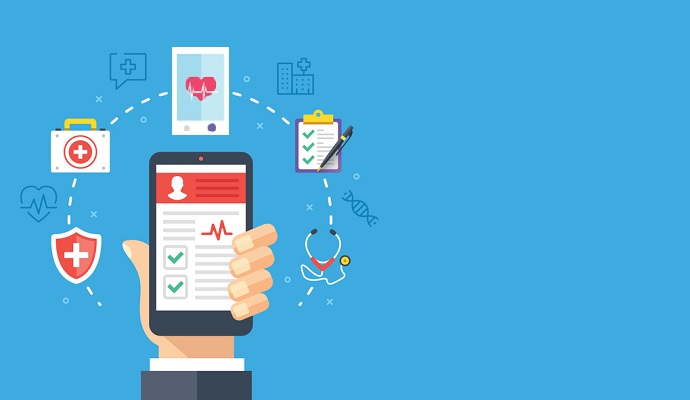UCI Uses Campus Wi-Fi to Test COVID-19 Contact Tracing App
The university is exploring the use of its wireless network as part of a COVID-19 contract tracing application.

Source: Thinkstock
- The University of California, Irvine is seeking to leverage the campus’s Wi-Fi connectivity to deploy a COVID-19 contact tracing application, which could help reduce the spread of the virus.
For more coronavirus updates, visit our resource page, updated twice daily by Xtelligent Healthcare Media.
A team in UCI’s Donald Bren School of Information & Computer Sciences received a rapid funding grant from the National Science Foundation for the project. The app promises to provide enhanced situational awareness to participants while preserving their anonymity.
The proposed app comes from a four-year-old initiative funded by the federal Defense Advanced Research Projects Agency (DARPA) to study privacy in smart buildings equipped with technologies to control access, energy usage, and other services.
The initiative is a component of a larger DARPA program that focuses on developing tools and techniques that enable information systems to keep personal and/or proprietary information private.
READ MORE: Cellular Network Data Detects Potential COVID-19 Hotspots
UCI’s effort, called the Testbed for Internet of Things-Based Privacy-Preserving Pervasive Spaces (TIPPERS) project, aims to make it easier for managers to keep track of occupancy in different parts of a building.
The project combines physical infrastructure – including sensors to collect data on activities in classrooms, offices, common areas, and conference rooms – with middleware that incorporates privacy technologies in a policy-driven framework. The app will also explicitly seek individuals’ permission to collect and use their location data.
“When coronavirus lockdowns began to take place in March, we immediately started thinking of how some of the lessons we’ve learned through TIPPERS could be put to use to help the campus regain some semblance of normal operations while preventing the spread of the contagion,” said principal investigator Sharad Mehrotra, UCI professor of computer science.
“Our approach offers a mechanism to warn people if they might have been exposed to someone who has been infected, and it empowers organizations to monitor how well their social distancing policies are being adhered to.”
The team plans to use TIPPERS for a variety of applications. It includes a social distancing compliance tool that employs anonymized Wi-Fi connectivity datasets to create occupancy profiles on entire buildings and different floors or zones within them, such as lecture halls, laboratories, and conference rooms.
READ MORE: Big Data Analytics Dashboard Shows Greatest Risk Factors for COVID-19
Using this information, campus authorities could determine which areas may be over capacity for effective physical distancing – which, in the case of many UCI buildings studied by TIPPERS researchers over the past few years, is about 12.5 percent occupancy.
“We anticipate that this function will be applicable to a variety of public spaces, such as city buildings, K-12 schools, colleges, hospitals, supermarkets and restaurants,” said co-principal investigator Nalini Venkatasubramanian, UCI professor of computer science.
The TIPPERS data dashboard shows information on UCI building usage focusing on different regions and floors within structures. The university’s Wi-Fi network collected the data securely and privately.
A crowd flow monitoring tool measures the circulation of people through regions over time. Users can view the dashboard on their mobile devices to help them avoid overly crowded areas, and facilities managers could use the feature to coordinate the cleaning and distancing operations.
People can also opt-in to get information about regions they visited and the number of people with whom they were in close contact, without having to identify themselves in the system. Additionally, the app features a hot spots exposure tool allows a person who has contracted COVID-19 to anonymously warn others about potential exposure. This can be done individually or through a trusted authority, like UCI Health or Student Affairs.
READ MORE: Machine Learning Powers COVID-19 Risk Assessment Dashboard
As an extension of this function, users can give TIPPERS permission to obtain their location data in return for alerts about possible encounters with people infected with coronavirus. This can be done after users learn of an exposure site due to TIPPERS’ unique ability to retroactively exchange permission for past data.
“In order to participate, individuals don’t need to do anything. They don’t need to download software, and there’s no adoption cost because it’s automatic,” Mehrotra said. “We are all already connected to the Wi-Fi network, which can trace us to a certain degree. This is very coarse-level localization, but it’s free, and for our purposes, it’s good enough.”
UCI researchers noted that a crucial factor in the success of voluntary contact tracing apps is public acceptance and buy-in, which will only be accomplished if people feel secure about how their data is being used. Tech giants Apple and Google have previously come up against security concerns after launching their version of a COVID-19 contact tracing app, demonstrating the necessity of equipping these tools with sufficient privacy protections.
“Since the early days of the COVID-19 pandemic, different countries have worked with private commercial entities to come up with a variety of approaches for tracing the spread of the coronavirus in their populations – many relying on Bluetooth, global positioning systems and other mobile technologies,” said Venkatasubramanian. “But limitations have become apparent, particularly in the areas of privacy and data security.”
